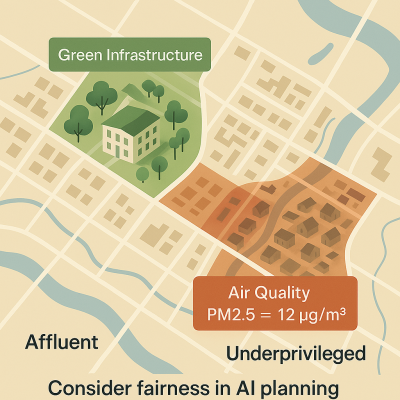
As the Architecture, Engineering, and Construction (AEC) industry grapples with the urgent need to reduce its environmental impact, Artificial Intelligence (AI) and Machine Learning (ML) are emerging as transformative technologies. From energy-efficient design to carbon tracking and adaptive infrastructure, these tools are redefining how professionals approach sustainability across the built environment.
This article explores how AI and ML are shaping the future of AEC in alignment with environmental sustainability, showcasing key innovations, emerging trends, and the opportunities that lie ahead.
The Environmental Imperative in AEC
The built environment contributes to nearly 40% of global carbon emissions. With urbanization accelerating and climate risks intensifying, the need for smart, sustainable solutions has never been more urgent. Traditional methods often lack the agility and data-driven insights required to address these challenges—this is where AI and ML step in.
How AI and ML Are Transforming Sustainability in AEC
Challenges Ahead
While the future is promising, several challenges must be addressed:
Collaboration among industry professionals, data scientists, policymakers, and communities is essential to overcome these barriers.
The Road Ahead: A Vision for 2030 and Beyond
Looking forward, we can expect:
As AI continues to evolve, its role will expand from optimization to innovation—helping humanity not just mitigate harm, but actively heal our relationship with the environment through smarter design and construction.
Conclusion
The fusion of AI, machine learning, and sustainability offers an unprecedented opportunity to reshape the built environment for the better. By embracing these technologies, AEC professionals can lead the charge toward a more resilient, equitable, and environmentally responsible future.

Artificial intelligence (AI) is transforming how we design buildings, manage infrastructure, and respond to environmental challenges. In architecture, AI aids generative design and space optimization. In engineering, it enhances simulation and predictive modeling. In environmental science, it enables smarter monitoring and resource management. However, with these advancements come pressing ethical questions.
As we delegate more decision-making power to algorithms, we must ask: Who is accountable? How do we prevent bias? Are these tools being used to benefit society—or merely to maximize profit? This article explores the ethical dimensions of AI integration in the fields of architecture, engineering, and environmental management, highlighting the responsibilities of professionals and developers alike.
AI systems often function as black boxes, making recommendations or decisions without clearly explaining how they were reached. In architecture and engineering, this opacity can have real consequences. For example:
Solution: Ethical AI use requires transparency. Designers and engineers must document how models are trained, what data was used, and how outputs are interpreted. Explainable AI (XAI) systems should be prioritized, allowing stakeholders to audit and question decisions.
AI models are only as unbiased as the data used to train them. If historical design or planning data reflects inequities—such as systemic neglect of low-income neighborhoods—AI could perpetuate these biases. In environmental applications, this can manifest as:
Solution: Ethical practice demands inclusive data sourcing, active bias auditing, and community involvement. AI should enhance environmental justice, not undermine it.
Smart buildings and infrastructure are increasingly equipped with AI-powered sensors, cameras, and monitoring tools. While these systems can improve efficiency and safety, they also raise concerns about surveillance and data privacy:
Solution: Ethical guidelines must prioritize informed consent, data anonymization, and clear data governance policies. Privacy should be built into the design of AI systems, not treated as an afterthought.
AI systems can automate many tasks traditionally performed by architects, engineers, and environmental scientists. While this boosts productivity, it also poses ethical questions about employment, skill development, and human dignity:
Solution: Instead of replacing humans, AI should augment human expertise. Ethical implementation involves retraining programs, equitable access to AI tools, and preserving opportunities for human creativity and judgment.
Ironically, while AI is often used to fight climate change, training large models consumes enormous energy. Engineering simulations, generative design, and smart city planning tools powered by AI all have a carbon cost.
Solution: Ethical AI use in sustainability must account for its own environmental impact. This includes:
When AI is used for projects in culturally diverse or indigenous communities—such as land-use planning or conservation—ethical risks increase. Imported models may not account for local knowledge systems, cultural values, or sovereignty.
Solution: Ethical AI deployment must include:
Conclusion
As AI becomes more embedded in architecture, engineering, and environmental decision-making, ethical considerations must evolve from side notes to central pillars. Professionals must advocate for responsible practices, developers must design transparent and inclusive systems, and regulators must establish clear frameworks for AI accountability.
Ultimately, ethics in AI is not just about avoiding harm—it’s about actively using technology to build a more just, equitable, and sustainable world.